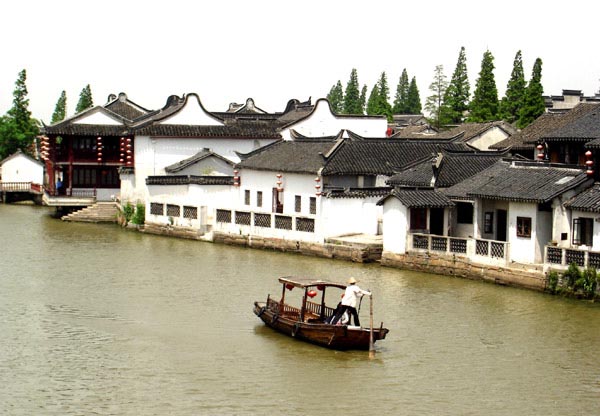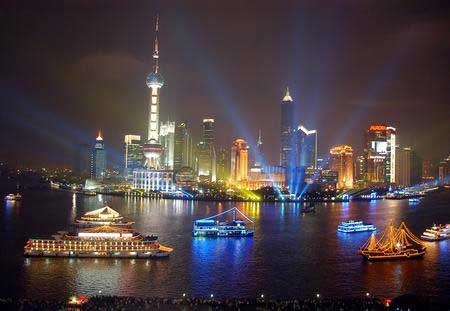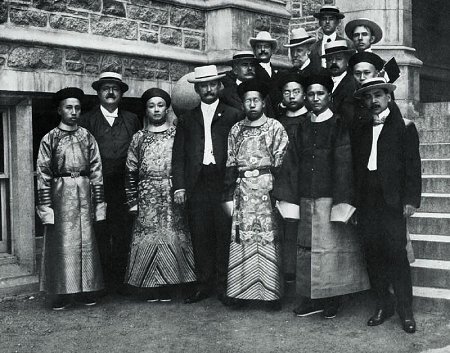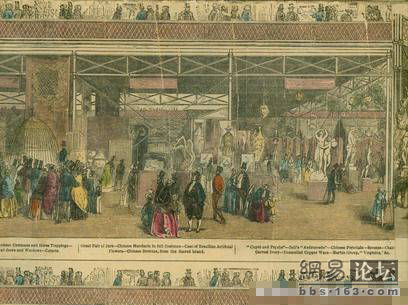If the Olympics is the most important comprehensive sports event for human beings, the World Expo originating from 1851 could be certainly regarded as the Olympics for economy, culture, science and technology. These two events share quite a lot of similarities. For instance, both of them are coordinated by the corresponding international organizations. Specially, the Olympics are coordinated by the corresponding International Olympic Committee (IOC) and the World Expo by the Bureau of International Expositions (BIE). These two events require the bid of a national government and the hosting country is always elected by several rounds of voting. Holding a successful event means a systematic project management, which poses overall test to the comprehensive national strength of a country. Abundant human resources, materials and fund need to be invested in the event and many aspects such as scientific achievement, management and staff competence need to reach certain level.
The bureau of International Expositions, abbreviated to BIE in French, was established in 1928, with its headquarters in Paris, France. By February 2008, BIE had had 140 member states.
As an international inter-governmental organization, BIE is responsible for organizing the investigation to the hosting countries, coordinating the timetable of the Expo, and guaranteeing the quality of it. Ever since its birth, the Bureau has been playing the role as a helmsman in the development of the World Expo. Within 80 years upon its establishment, the Bureau not only effectively prevents the Expo from developing in an unorganized way, but also attaches great importance to the quality and content of the event as to continuously improve the exposition management.
Universal Expositionor Expo is the name given to various large public exhibitions held since the mid-19th century. They are the third largest event in the world in terms of economic and cultural impact after the FIFA World Cup and the Olympic Games. They have been organized for more than one and a half centuries — longer than both the (modern) Olympic Games and the World Cup.
The first Expo was held in The Crystal Palace in Hyde Park, London, in 1851 under the title “Great Exhibition of the Works of Industry of All Nations”. “The Great Exhibition”, as it is often called, was an idea of Prince Albert, Queen Victoria’s husband, and was the first international exhibition of manufactured products. As such, it influenced the development of several aspects of society including art and design education, international trade and relations, and even tourism. Also, it was the precedent for the many international exhibitions, later called “World’s Fairs”, which were subsequently held to the present day. In Acapulco, New Spain (Mexico), annual fairs took place for several centuries where countries from Asia exhibited their products brought to the New World by the Spanish Royal Navy Nao de China.
The main attractions at World's Fairs are the national pavilions, created by participating countries. At Expo 2000 Hanover, where countries created their own architecture, the average pavilion investment was around €13 million.
Given these costs, governments are sometimes skeptical about participation as benefits are often assumed not to outweigh the costs. Tangible effects are difficult to measure; however, an independent study for the Dutch pavilion at Expo 2000 estimated the pavilion (which cost around € 35 million) generated around € 350 million of potential revenues for the Dutch economy. It also identified several key success factors for world exposition pavilions in general.
At the Great Exhibition 1851 London were displayed a high-powered steam engine, an automatic chained fine spinning frame, a high-speed steamer and a crane. New things appeared one after another and the eyes of visitors were too busy to pick them up: the elevator at the World Fair 1853 New York, Eiffel Tower displayed in Expo 1889 Paris, the airplane displayed on 1904 Saint Louis Expo, the cinematograph camera and the TV set at New York World’s Fair 1939-1940, and in Expo1970 Osaka the moon stone the U.S. astronaut brought back from the moon.
World Expo has excited and inspired millions of people around the world by expressing the hopes and desires of their times. Perhaps unwittingly, they also provide a fascinating glimpse into the realities of those same times.
Ever since the first world’s fair in London in 1851, the goals of world’s fairs have been both high-minded as well as commercial. They also allow people to explore the world outside of their everyday experience — outside cultures, new scientific advancements, and new inventions.
As times change, world expositions have changed to fit those times. They continue to reflect both the commercial needs of their times while presenting the ideals, hopes, and aspirations of people even as those evolve.
One of the primary goals of world’s fairs is to entertain. Both the amusement zones and pavilions in world’s fairs have evolved over time. As people have more and more entertainment options, world expositions have continued to find new ways to provide information and inspiration in new ways.
(Source: The World Exposition Reader)





